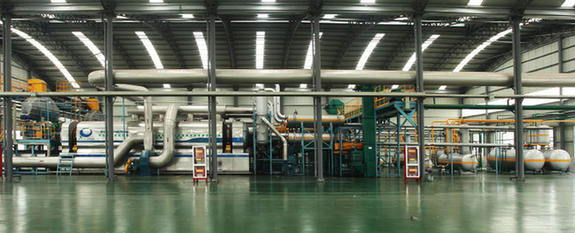BRICS New Development Bank – Promoting Reform with an All-Win Strategy
By SHEN YI
On July 15, 2014, at the 6th BRICS Summit in Brazil, the heads of the BRICS countries signed the Fortaleza Declaration, which announced the founding of the BRICS New Development Bank (NDB) and an emergency reserve fund. The initial authorized capital of the bank will be US $100 billion with a first investment of US $50 billion contributed equally by each of the five member states. At the same time, a US $100 billion contingent reserve arrangement (CRA) shall be established, of which China will provide US $41 billion, Russia, Brazil and India will each provide US $18 billion and South Africa will provide the remaining US $5 billion. In addition, all members will have equal share of stock rights and voting rights in the new bank and take turns to nominate the president of the bank, which is headquartered in Shanghai.
|
 |
|
The BRICS New Development Bank will be headquartered in Shanghai. |
The World Bank Now U.S.’s Pawn
Both the World Bank (specifically the International Bank for Reconstruction and Development, IBRD) and the NDB emphasize “development.” This suggests that these financial institutions were designed to promote development through finance and facilitate progress by development. After WWII, the U.S. established a hegemonic system by virtue of its own power. In a sense, this system has been able to survive until today because it met the demands of a world that was in a state of devastation. It provided capital aid that was required to restart the global economy. The normal functioning of the world depends on support from entities that work for the public good.
However, since the establishment of the World Bank, the U.S. has always used it as a state strategic tool and put it above the goals of facilitating development and progress. In order to guarantee the state interest of the U.S., the international reconstruction and development under the framework of the World Bank needs to meet some requirements. For instance, the internal voting mechanism of the World Bank ensures America’s supremacy status. The U.S. has the sole veto power over the ratio of contributions. Moreover, the U.S. political system guarantees that its legislative and administrative institutions are able to offset any verbal commitment the U.S. government has made to change the contributions ratio.
In addition, the World Bank imposes conditions of reforms on its assistance projects. Such reforms are generally “successful.” However, the criteria for “success” are not set and judged by the countries receiving aid, but by the World Bank and the U.S. capital and strategic forces behind the bank. How successful are these reforms actually? One way of measuring this is to look at the developing countries that achieved independence after WWII and the countries that accepted the World Bank’s aid after certain crises. Comparing the situations in these countries before and after the reforms, we can see the true effects. The most typical case, perhaps, is South America represented by Brazil. In this sense, Brazil’s positive attitude towards the NDB is understandable.
BRICS Bank in the Best Interests of Developing Countries
The establishment of the NDB is, in fact, a challenge to the World Bank. Nevertheless, it represents neither the transfer of power that is often discussed in traditional international relations theories of the West, nor another version of the so-called challenge posed by emerging countries to hegemonic powers drawn from far-fetched historical analogies. The focus of this challenge is to give back a fair system to the world. The large number of developing countries that have achieved economic growth aspire to effective development. They long for an international financial institution that genuinely carries out the concept of promoting development through finance and facilitating progress by development, and offers support and assistance in a more just and equitable manner than the current international system represented by the World Bank.

